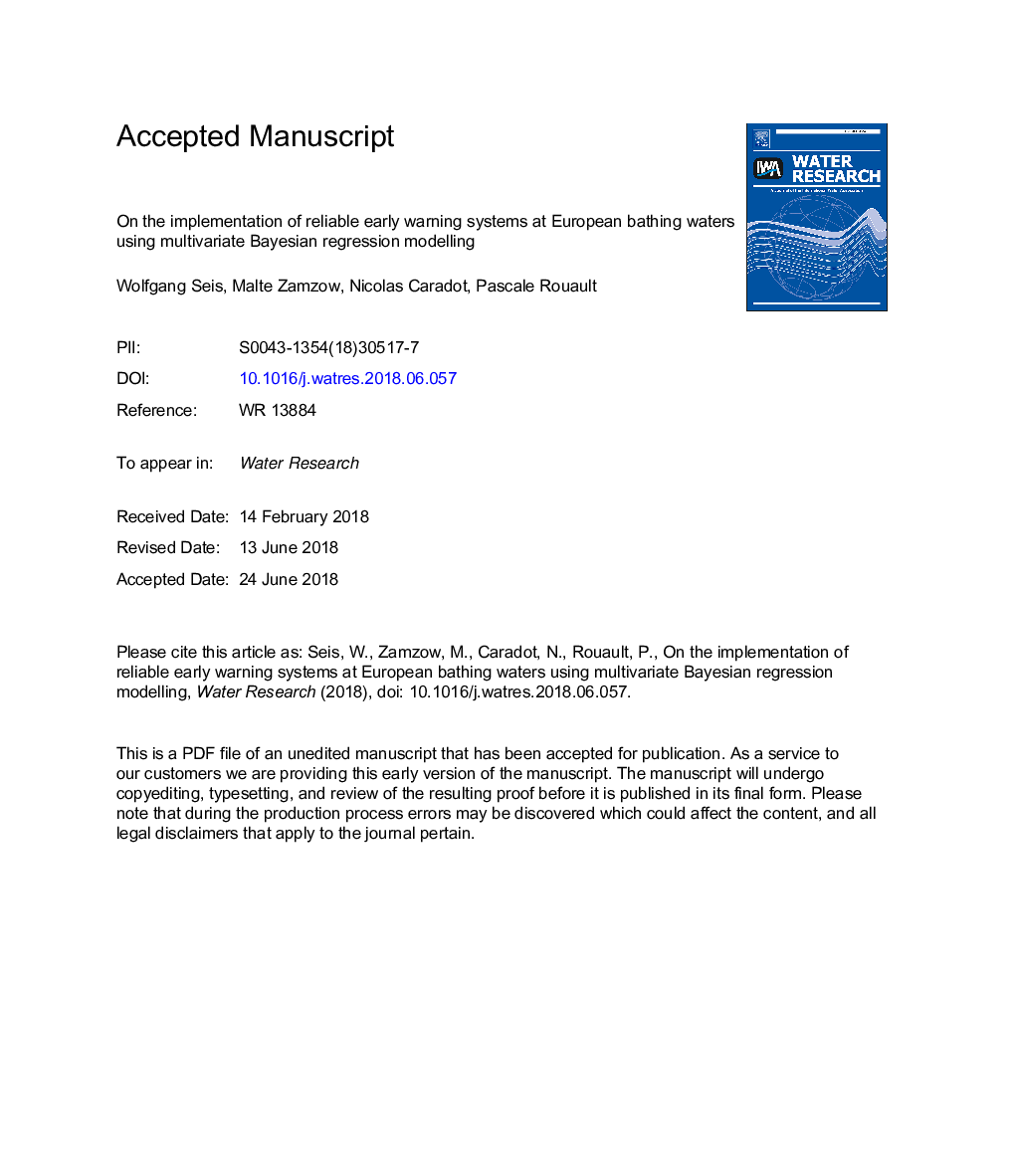| Article ID | Journal | Published Year | Pages | File Type |
|---|---|---|---|---|
| 8873534 | Water Research | 2018 | 36 Pages |
Abstract
For ensuring microbial safety, the current European bathing water directive (BWD) (76/160/EEC 2006) demands the implementation of reliable early warning systems for bathing waters, which are known to be subject to short-term pollution. However, the BWD does not provide clearly defined threshold levels above which an early warning system should start warning or informing the population. Statistical regression modelling is a commonly used method for predicting concentrations of fecal indicator bacteria. The present study proposes a methodology for implementing early warning systems based on multivariate regression modelling, which takes into account the probabilistic character of European bathing water legislation for both alert levels and model validation criteria. Our study derives the methodology, demonstrates its implementation based on information and data collected at a river bathing site in Berlin, Germany, and evaluates health impacts as well as methodological aspects in comparison to the current way of long-term classification as outlined in the BWD.
Keywords
Related Topics
Physical Sciences and Engineering
Earth and Planetary Sciences
Earth-Surface Processes
Authors
Wolfgang Seis, Malte Zamzow, Nicolas Caradot, Pascale Rouault,
